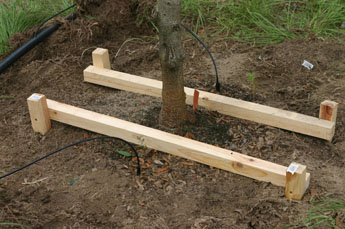Fall Is the Right Time to Plant Trees and Shrubs
go.ncsu.edu/readext?818243
en Español / em Português
El inglés es el idioma de control de esta página. En la medida en que haya algún conflicto entre la traducción al inglés y la traducción, el inglés prevalece.
Al hacer clic en el enlace de traducción se activa un servicio de traducción gratuito para convertir la página al español. Al igual que con cualquier traducción por Internet, la conversión no es sensible al contexto y puede que no traduzca el texto en su significado original. NC State Extension no garantiza la exactitud del texto traducido. Por favor, tenga en cuenta que algunas aplicaciones y/o servicios pueden no funcionar como se espera cuando se traducen.
Português
Inglês é o idioma de controle desta página. Na medida que haja algum conflito entre o texto original em Inglês e a tradução, o Inglês prevalece.
Ao clicar no link de tradução, um serviço gratuito de tradução será ativado para converter a página para o Português. Como em qualquer tradução pela internet, a conversão não é sensivel ao contexto e pode não ocorrer a tradução para o significado orginal. O serviço de Extensão da Carolina do Norte (NC State Extension) não garante a exatidão do texto traduzido. Por favor, observe que algumas funções ou serviços podem não funcionar como esperado após a tradução.
English
English is the controlling language of this page. To the extent there is any conflict between the English text and the translation, English controls.
Clicking on the translation link activates a free translation service to convert the page to Spanish. As with any Internet translation, the conversion is not context-sensitive and may not translate the text to its original meaning. NC State Extension does not guarantee the accuracy of the translated text. Please note that some applications and/or services may not function as expected when translated.
Collapse ▲Written by Jim Janke, Extension Master Gardener℠ Volunteer in Haywood County
Contrary to popular opinion, fall is the best time to plant (or move) trees, shrubs, and perennials. Why?
- Transplant shock is less than if planted in spring or summer.
- Watering requirements after planting are minimal, because cool weather slows growth and deciduous plants lose their leaves.
- Root systems continue to grow during late fall and winter, giving plants a head start next spring.
Here are some thoughts on fall planting, and some other gardening tasks to complete before the snow flies.
Choose plants that will thrive in each site’s specific conditions. Consider sun vs. shade, wet vs. dry, protected vs. windy, and pH. Soak bare-root plants well before planting, but don’t drown them in a full bucket of water overnight. Dig a hole at least twice as wide as the root ball and just as deep, then break up the soil in the bottom of the hole with a garden fork. Add organic matter like compost or pine bark to the soil from the hole, and mix in a handful or two of rock phosphate or superphosphate. Do not add any other fertilizer at planting time. Place the plant in the hole so that it will be at the same level as it was in the nursery container. Water immediately after planting and again after a few days if the weather is dry. Then in spring water deeply on a regular basis until the roots get established. Staking large trees is necessary to prevent wind from blowing them over. Here is an article from the University of Florida that describes the preferred method for staking trees into the ground.

The preferred method for staking newly planted trees. From the University of Florida Extension.
To learn more from our ‘Learn to Grow’ video series, click here to watch a demonstration on how to plant blueberries.




